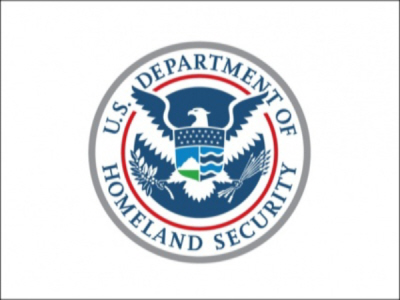This year we have been working to deliver a “CPO Rising Virtual Roundtable” series, sponsored by IBM. Each of the roundtables brings together three or four leading Chief Procurement Officers to discuss a specific topic in depth and share their insights, experiences, plans, and recommendations. In each of these, I serve as host and moderator (click link to listen).
 Today’s article is the third installment in the CPO Rising Virtual Roundtable series (sponsored by IBM), and also the third part of our profile on Dr. Nick Nayak, Ph.D., former Chief Procurement Officer (CPO) for the Department of Homeland Security (DHS). In our first and second articles, we profiled Dr. Nayak’s rise to become the longest serving CPO at DHS, and shared an overview of the DHS procurement mission and challenges that differentiate it from the private sector. Today’s article will examine the lasting impact that Dr. Nayak has made in his time as CPO at DHS, and how his tenure there is a case study in more effective inter-governmental collaboration and execution.
Today’s article is the third installment in the CPO Rising Virtual Roundtable series (sponsored by IBM), and also the third part of our profile on Dr. Nick Nayak, Ph.D., former Chief Procurement Officer (CPO) for the Department of Homeland Security (DHS). In our first and second articles, we profiled Dr. Nayak’s rise to become the longest serving CPO at DHS, and shared an overview of the DHS procurement mission and challenges that differentiate it from the private sector. Today’s article will examine the lasting impact that Dr. Nayak has made in his time as CPO at DHS, and how his tenure there is a case study in more effective inter-governmental collaboration and execution.
Since its creation in March 2003, DHS has grown into a massive, and often publicly-facing government bureaucracy with roughly 240,000 federal employees working in 22 agencies at home and abroad to protect the homeland. Despite its mission – or perhaps because of it – DHS has frequently been criticized as a boondoggle – an expensive attempt by policy makers to prevent the inevitable. Although there hasn’t been a terrorist attack on American soil of the breadth and depth of 9/11 since that infamous day, critics have questioned Homeland Security’s spending habits, management, and even its mission since its creation. The government’s response to Hurricane Katrina, the recent recession, and several high-profile security failures and near misses have only added to the critics’ line of questioning.
Clearly, taking a high-ranking management position within DHS is a weighty and politically-sensitive endeavor. So in October 2010, when Dr. Nayak reported for duty at DHS as its next CPO, he brought the nine agencies and more than 1,400 procurement officers together for the first time, created a strategic plan with four priorities and corresponding objectives, initiatives, and metrics.
“I was told that the chief procurement officer had never communicated directly with the 1,400 employees,” said Dr. Nayak. “So, what I did was I brought the nine together, worked through creating a strategic plan that had my priorities, collectively we all endorsed the priorities, initiatives and metrics. I told everybody that I created it, I let them shoot holes in it. And then finally everyone endorsed it with a signature and a picture in it. I told everybody that we would issue an annual progress report basically saying two things, here’s how we did and then getting together and tweaking the metrics and the initiatives moving forward in the next year.”
These four priorities, along with their corresponding objectives, initiatives, and metrics, are:
- Quality People: To address perennial workforce challenges, like recruiting, retaining, and replacing their procurement staff, Dr. Nayak and his staff created the Homeland Security Acquisition Institute (HSAI) and the Acquisition Professional Career Program (APCP – their intern program).[1] Collectively, these two initiatives help recruit, retain, and in many cases, replace its aging procurement officers (36%, or 400 of which will be eligible to retire in the next few years), and those it loses to the private sector. And Dr. Nayak held his staff accountable to performance metrics, including employee and customer satisfaction.
- Quality Contracting: How is the Department saving money? How much has it saved through strategically sourcing contracts? What’s the utilization rate of these contracts? Dr. Nayak challenged his staff to come up with these numbers, and include them in their annual progress report.
- Quality Program Management: Dr. Nayak prioritized greater program management of contracts and sourcing projects, and trained his workforce to be better program managers. He also extended this training to Homeland Security’s industry partners, viewing their program managers as force multipliers for more effective B2C collaboration. Success was measured in part by the number of government-certified program managers that deal with the DHS procurement community.
- Quality Government-Industry Communication: Lastly, Dr. Nayak prioritized more effective government-industry communication. He judged performance by number of industry days his team held, and the number of draft Requests for Proposals (RFP) they issued. Issuing draft RFPs, Dr. Nayak says, “is the most useful way to get industry feedback. It will allow you to put out a quality requisition that maximizes businesses’ ability to compete, and it doesn’t drag people through the procurement and award process.”
Another initiative that Dr. Nayak undertook was to issue goals and a “priority letter” to the procurement heads at each of the nine reporting agencies within DHS at the beginning of each fiscal year. Dr. Nayak, the procurement heads, and their managers all signed these letters, which tied procurement heads to annual, binding performance plans. They’d have periodic check-ins with their managers throughout the year, which they would report up to Dr. Nayak at the end of the year. As a result of these performance and accountability initiatives, Dr. Nayak and his staff were able to measure success collectively, describe success, and publicize success to the customers, tax payers, and DHS workforce.
While there are many performance metrics that DHS has made available to constituents and curious readers (you can find them in their CPO Annual Progress Report for FY 2013), here are some of the more impressive metrics Dr. Nayak and his team delivered to the American tax payer:
- Saved $337 million through leveraging buying power (Strategic Sourcing)
- Competed 70% of contract dollars awarded, exceeding the government-wide average of 65%
- Achieved 95% Federal Procurement Data System (FPDS) data accuracy, with a total accuracy rate increase of 10% over the last five years
- Experienced only 0.36% contract awards protested – 5% of those were sustained compared to the latest government-wide sustainment rate of 17%
- For the fourth consecutive year, earned an “A” from the Small Business Administration, the only agency of the top seven federal spenders to do so
- For the third consecutive year, continued to be a leader in sustainable acquisition with 99% of DHS procurements being environmentally preferable products and services
- In the Office of Personnel Management’s annual “Federal Employee Viewpoint Survey,” DHS contracting professionals reported a higher job satisfaction rate than all other government personnel and all other government contracting professionals.
Although Dr. Nayak has left DHS after nearly four years of service to the Department and more than 28 years of federal contracting service, he is not leaving government work. Rather, he is starting his own consulting company (Green Light Acquisition) wherein he will help businesses to connect with federal clients. He won’t be taking just anyone. “I’m only going to take clients that I feel have something valuable to offer government.” Indeed, even in his private ventures, Dr. Nayak remains committed to public service, and to affecting positive change through the federal procurement process. He can be reached at greenlightacquisition@gmail.com.
[1] The HSAI offers over 300 classes to the more than 1,400 DHS procurement professionals (as well as procurement officers and contract managers inside and outside of government), and trains them on the best business and technology practices. Also, DHS’s intern program graduates 150 interns from a three-year plan into one of the nine DHS procurement agencies.
RELATED ARTICLES
DHS Procurement: Securing the Homeland, One Purchase at a Time
Dr. Nick Nayak – A Profile of a Public-Sector Chief Procurement Officer
Announcing The 2014 Chief Procurement Officer (“CPO”) Virtual Roundtable Series

